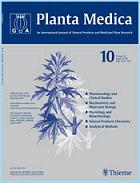
“A randomized, placebo-controlled crossover trial utilizing vaporized cannabis containing placebo and 6.7% and 2.9% delta-9-tetrahydrocannabinol (THC) was performed in 42 subjects with central neuropathic pain related to spinal cord injury and disease.
Dose-dependent improvement in pain score was evident across all pain scale elements.
Plans for future work are outlined to explore the relationship of plasma concentrations with the analgesic response to different cannabinoids.
Such an appraisal of descriptors might contribute to the identification of distinct pathophysiologic mechanisms and, ultimately, the development of mechanism-based treatment approaches for neuropathic pain, a condition that remains difficult to treat.”










